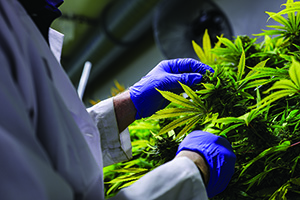Illinois to Lead by Example With New Cannabis Cultivation Energy Standards
Marijuana Industry News September 6, 2019 MJ Shareholders
Illinois will begin adult-use cannabis sales Jan. 1, 2020—a major Midwest story in its own right—but industry observers are pointing to the state’s suite of new energy standards as narrative to watch, a bellwether for what’s to come in the business.
Gov. J.B. Pritzker signed the energy bill (H.B. 1438) into law earlier this summer. The goal is to place and enforce limits on electricity and water use in this rapidly growing industry; Illinois currently allows only indoor cannabis cultivation for its 20 license-holders. The growers in Illinois’ medical cannabis market are the ones who will kickstart the state’s adult-use market in 2020, and they’re the companies that will be expected to meet the state’s energy standards and usher in the new era of cannabis in Illinois.

Anthony Tahlier
Here are the main elements of the state’s cannabis energy law:
– Growers may use no more than 36 watts per square foot of cultivation canopy
– Growers must use lights approved by the DesignLights Consortium (the DLC issued its own performance standards earlier this year)
– Growers must use automatic watering systems
– Growers must limit water runoff to no more than 20 percent of usage during specific “watering events”
– Growers must commit to using high-efficiency HVAC equipment, with certain specifications depending on the size of a facility.
The discussion around cannabis cultivation energy standards has followed legalization bills around the U.S. for years, and Illinois is joining Massachusetts in getting out in front of the issue as its medical cannabis market turns over to a broader adult-use market and the attendant increase in demand. On top of the state’s 20 licensed indoor cannabis growers, Illinois regulators expect to license 100 “craft” cannabis growers, who will each be permitted to grow up to 5,000 square feet of plants.
As the Illinois Environmental Council points out, “A typical 5,000-square-foot indoor cannabis cultivation facility uses 66 times more energy than the average U.S. household. This energy usage adds up.”
With H.B. 1438 on the books now, cannabis growers will be required to follow standards and explicitly describe how they will meet those goals. Reporting and measuring cannabis cultivation data will be doubly important now, and those measurements must be used to demonstrate that energy standards compliance is happening at licensed businesses.
“This is a high-resource-use industry, and it doesn’t have to be,” State Rep. Kelly Cassidy, D-Chicago, told St. Louis Public Radio in a story out of Belleville. “Illinois can show the way to do it in a better way.”
January 2020 will signal a new era for cannabis businesses and consumers in Illinois, and the success of the behind-the-scenes work on energy use will be clear in how the market develops over the next few years.
“For all stakeholders to achieve their objectives in this scenario, we need to recognize the situation for what it is,” Resource Innovation Institute Executive Director Derek Smith said in a public statement. “It is hyper-accelerated market transformation. This industry is essentially going from a shadow high-margin economy to a highly regulated market suffering shockwaves of cost compression while it scales globally overnight without any handbook. Installation of efficient technologies is on the rise, yet our research indicates that few facility operators know how to optimize their efficiency. Every supply chain company I speak to is telling me that they need more data. Over time we can set additional standards and targets based on what the data are telling us. For now, states should focus on getting the right mix of guidance and support, like Massachusetts and Illinois have done.”
MJ Shareholders
MJShareholders.com is the largest dedicated financial network and leading corporate communications firm serving the legal cannabis industry. Our network aims to connect public marijuana companies with these focused cannabis audiences across the US and Canada that are critical for growth: Short and long term cannabis investors Active funding sources Mainstream media Business leaders Cannabis consumers










